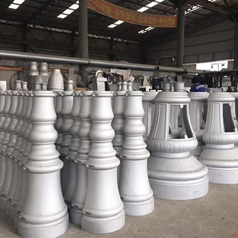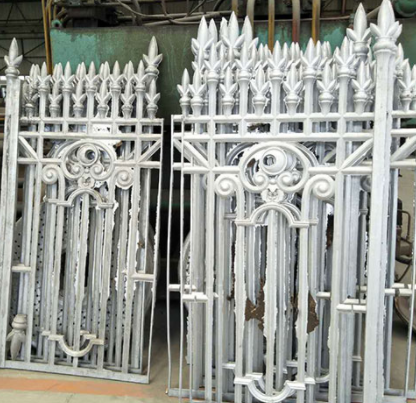The most important consideration in aluminium casting is the production volume. With the right casting method, your products will be of desired quality in terms of dimensional accuracy, surface quality, thermal and electrical conductivity, mechanical strength, costs of production and tooling, as well as delivery time. However, the annual production volume that can be made with each method is dependent on the requirements and the budget for your product – the production volumes mentioned here are rough estimates.
Aluminium Sand casting is a method for low production volumes (1 to 5,000 units per year) as well as prototyping. In this method, molten aluminium is poured into a resin-bonded sand mould to produce castings of all sizes with low tooling costs. On one hand, depending on the type of product, this method might be the fastest method for casting it. On the other hand, the delivery time might be too long to respond to urgent demand, depending on your product and the workload of your casting partner. Also, this casting method has low dimensional accuracy, and, thus, it will not produce very complex products. For prototyping, only the overall dimensions of your product are needed to test the mechanical strength of its structure.
Gravity die casting for producing small volumes of very complex and small aluminium components. Gravity die casting is a form of permanent mould casting, in which molten aluminium is poured into a metallic mould. This method is cost-effective for producing small volumes (100 to 50,000 units per year) of very complex and small aluminium parts, such as air intake components of a diesel engine. Like in low-pressure die-casting, a fine surface finish can be produced, and the mechanical properties of the product can be improved through heat treatment. The costs are moderate, being between those of high pressure die casting and sand casting. This method is not suitable for larger production volumes, because the moulds may have to be replaced during the production. And, finally, the moulds can lead to product defects if they are not removed promptly.
When the production volume of your product is moderate or when it increases from small volumes of sand casting, there are a few methods to consider. Low-pressure die-casting, shell mould casting and gravity die-casting are high-quality and cost-effective casting methods for moderate production volumes.
Low pressure die casting enables a high level of solidity and low porosity in aluminium components
Low pressure die casting is a cost-effective method, in which the mould is filled up slowly with molten aluminium pushed upwards to the die through a tube with low pressure. This enables a high level of solidity and low porosity for your product. Also, its mechanical properties, such as heat conductivity, can be improved through heat treatment. Low-pressure die-casting also produces a fine surface finish, which makes it easier to fit components on the casted part. The costs of this method are slightly higher than sand casting, but the moulds last for longer. However, this method is not suitable for mass production, as it can produce from 100 to 10,000 units per year.
Shell mould casting for moderate production volumes and pre-series
Shell mould casting is also a competitive method for moderate production volumes (100 to 10,000 units per year), pre-series and even prototyping, especially of thin-walled products. In this method, molten aluminium is poured into a shell-sand mould, which is made by pouring fine sand onto a heated metal pattern. High-dimensional accuracy and fine surface finish can be achieved by using this aluminium casting method. For this reason, like in low pressure and gravity die casting, the costs of this method are higher than sand casting. Because the moulds are not reusable, shell mould casting is not ideal for mass production.
High pressure die casting is a mass production aluminium casting method (1,000 to 1,000,000 units per year), in which a steel mould is filled up with molten aluminium with a lot of pressure. This method is the best for mass production because several mould bases can be produced for several large machines to run simultaneously. The dies are more durable than other kinds of moulds. The results are high quality, including accurate dimensions, fine surface finish and low porosity, except for complex products, especially those with hollow sections. However, like shell-mould casting, it can also produce thin-walled products. The start-up and tooling costs are high, which is why it is meant for mass production.
Ready to start designing your product for aluminium casting? Need help with producing your products? Contact us and we will help you!
 How To Solve The Burr Of Aluminum Castings
Jul. 29, 2024
How To Solve The Burr Of Aluminum Castings
Jul. 29, 2024
 Aluminum Casting 4 Kinds Of The Surface Treatment Pr...
Jul. 09, 2024
Aluminum Casting 4 Kinds Of The Surface Treatment Pr...
Jul. 09, 2024
Copyright © Dalian Lianjiang Metal Co., Ltd. All Rights Reserved | Sitemap
Recommend Products: Aluminum Mailbox With Post
